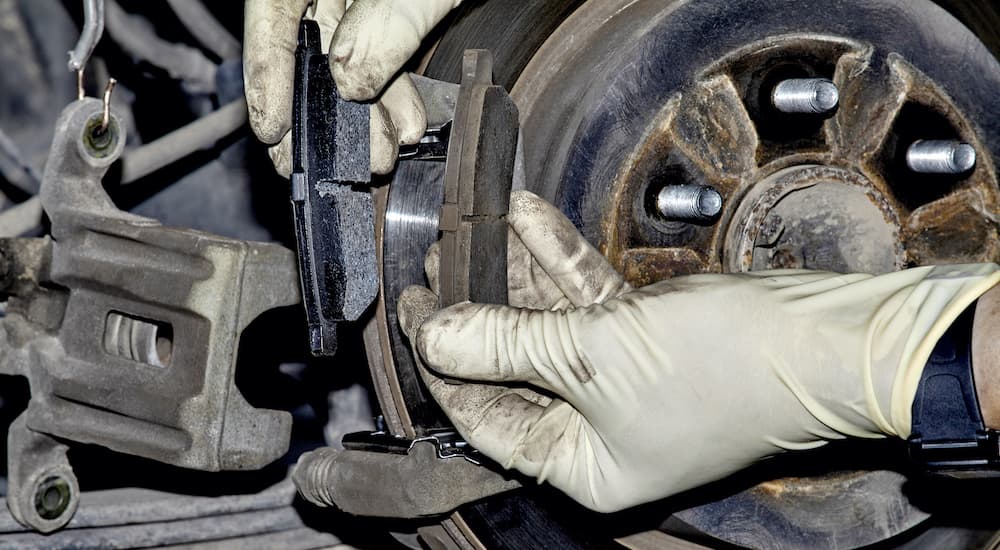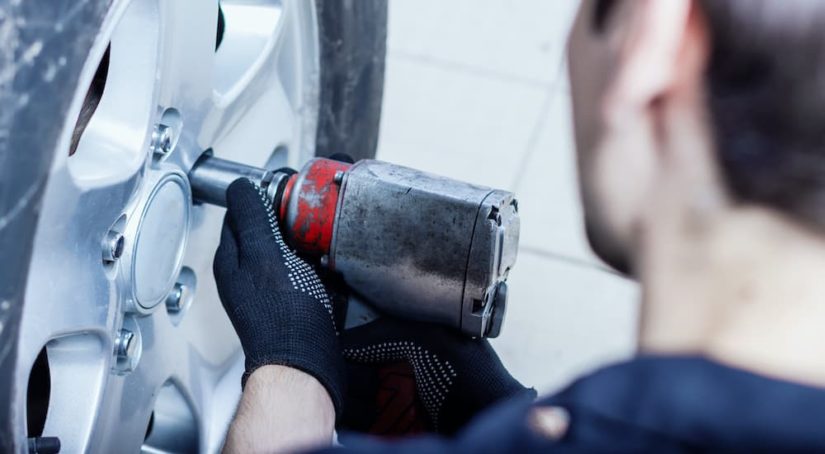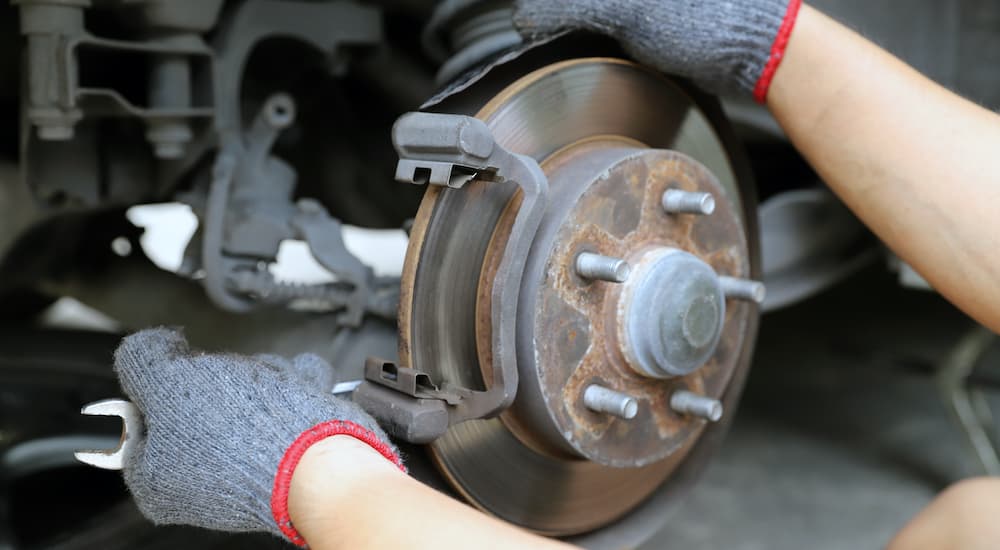While advanced driver-assistance systems like adaptive cruise control, lane-departure warning, and pedestrian detection might be all the rage these days, brakes remain the single most important safety feature in any vehicle. But why are brakes so important? They might not garner as much attention as some of the flashier components under the hood, but there’s no denying the role they play in keeping drivers and everyone else on the road safe on a daily basis. A good set of well-maintained brakes can make all the difference in an emergency, allowing the vehicle to come to a quick stop that can spell the difference between a near-miss, a fender bender, and a major accident.
Given the importance of brakes in overall road safety, it’s vital to ensure your vehicle’s braking system is in good working order. All too often, drivers wait until brakes are on their last legs before addressing the issue and scheduling brake service, but with a little know-how, it’s easy to spot potential brake issues before they become big-ticket repairs and give you plenty of time to find a place that does brake change near you.
Drum vs Disc Brakes
We’re going to look specifically at the components of a typical disc brake system, which is the dominant type of braking system in most of today’s vehicles. Drum brakes can still be found on some vehicles, but by and large, disc brakes have become the dominant approach over the last couple of decades. While disc brakes do have their limitations, they are generally thought to be more reliable and effective than drum brakes. This is due in large part to the way each system handles heat. No matter which type of braking system you’re dealing with, heat is unavoidable as both disc and drum brakes rely on friction to slow a vehicle’s momentum.
The difference comes down to how the brakes are constructed. Disc brakes use an open-air design that allows them to quickly dissipate heat and dry as the vehicle moves forward. Drum brakes, on the other hand, are located within a metal drum near the center of the wheel. Being closed off from the surrounding environment means that drum brakes tend to heat up much more quickly than disc brakes. The hotter the brakes get, the less effective they become at producing friction, leading to something known as brake fade. This is especially common at higher speeds, which is why high-performance vehicles tend to opt for the disc brake approach.
That’s not to say that drum brakes don’t have their advantages. While they might not work as well in wet weather or at high speeds, they’re ideal for a more supplementary role. Drum brakes can be found on the rear wheels of many of today’s vehicles, which play a smaller part in stopping a vehicle than the front wheels. Drum brakes are often cheaper than their disc counterparts and pull double duty in serving as a vehicle’s parking brake, something disc brakes can’t hope to replicate. This is due to the fact that disc brakes shrink as they cool, meaning that they would lose contact with the brake disc as they cool off, leaving the vehicle free to roll away down the street.
Drum brakes also tend to weigh less than disc braking systems while also creating less drag and generally having a longer service life. That said, they are more difficult to inspect than disc brakes, given the fact that they’re hidden away with a metal housing. If your vehicle has drum brakes on the front or rear, it’s important to have them regularly inspected by a pro, as disassembling a brake drum tends to be beyond the reach of most at-home mechanics.
Parts of the Braking System
While we tend to use the term “brakes” as a catch-all, your vehicle’s braking system is actually made up of many different components. From the brake master cylinder to the calipers, brake rotors, and pads, these parts work in tandem to provide your vehicle with all the stopping power required to stay safe behind the wheel. Let’s take a little time to familiarize ourselves with some basic brake-related terminology and concepts and then get into some of the common signs and symptoms of failing brakes. This will make it easier to conceptualize what’s going on within the braking system and how different components interact and wear out over time.

Pads
Brake pads do the lion’s share of the work every time you step on the brake pedal. The brake pads are compressed against the brake rotors, providing the pressure and friction needed to bring the vehicle to a stop. Brake pads are constructed from semi-metallic or ceramic materials, which differ in terms of performance. Ceramic pads are the more popular option but tend to leave a sticky film due to the way they adhere to the rotors. Semi-metallic pads are typically found on vehicles that see a lot of heavy-duty towing use, and while they provide great stopping power, they’re noisier than ceramic pads. They also wear out a lot faster, making ceramic pads the go-to choice for drivers looking to save a little cash.
The signs of failing brake pads include:
- Squealing noise
- Grinding noise
- Reduce stopping power
- Grooves/scratches on the surface of the brake rotor
- Pulsing in the brake pedal
- Vehicle pulls to one side when braking
Rotors
Brake rotors are the other half of the braking equation. These saucer-shaped rotors can be found mounted on the wheel hub behind the hubcaps, where they’re responsible for slowing the movement of the wheels. Rotors take a lot of abuse throughout their service life and can be scratched, warped, or otherwise compromised by worn-out brake pads. While brake rotors tend to last longer than brake pads––50,000 to 70,000 miles on average––most auto experts recommend replacing the pads and rotors at the same time. While it’s a more expensive method, it does ensure that both the brake pads and rotors will last as long as possible as they’re not rubbing against older components which might cause uneven or unusual wear patterns.
The signs of failing brake rotors include:
- Squealing/squeaking noise
- Vibrations when braking
- Grooves/scratches on the surface of the brake rotor
- Reduced stopping power
Calipers
Brake calipers are essentially the housing for your brake pads and the hydraulic pistons that drive them. Front brakes often feature two pistons, which provide more braking power but use a single-piston approach for the rear brakes. Unlike brake pads and rotors, brake calipers often don’t need replacement, with a service life that usually outlasts the vehicle itself. Of course, this isn’t always the case. If you neglect to perform your brake pad and rotors replacement according to the recommended schedule, they can start to produce excess heat, which can damage or even disable brake calipers. These calipers are also prone to rust, corrosion, and other wear and tear but can usually be reconditioned to like-new condition with a little elbow grease.
The signs of failing brake calipers include:
- Vehicle pulls to one side when braking
- Leaking brake fluid
- Soft or spongy brake pedal
- Reduced stopping power
- Uneven brake pad wear
- Grinding noise
Brake Fluid and Lines
Brake lines are responsible for delivering the hydraulic brake fluid to the pistons located in your brake calipers. The sealed system is relatively resistant to wear and tear, but when components start to break down, moisture, dirt, air, and other corrosive contaminants can work their way into the brake lines. These leaks aren’t always obvious, so it’s important to make sure you get your brake fluid and brake lines inspected on a regular basis––usually around every 25,000 miles. If the brake fluid isn’t up to snuff a mechanic might recommend a flush, which involves cleaning out the system and replacing the old fluid with a fresh batch.
The signs of failing brake lines and fluid include:
- Leaking brake fluid
- Soft, spongy brake pedal
- Reduced stopping power
- Brake warning light illuminated
- Discolored (brown or black) brake fluid
- Noisy brakes
- Burning smell from brakes
- Vibration when braking
A Vital Part of Driving
Brakes are a vital part of any vehicle, and with a little know-how, it’s easy to quickly spot some common brake system issues. Sticking to a regular schedule of brake pad and rotor replacement is one of the easiest ways to ensure your brakes are in good working order, so don’t neglect regular inspection and keep an eye out for any signs that they might be on their last legs. With some luck, issues with calipers, brake lines, and fluid won’t come up too often, but it’s still good to know what to look for. As is the case when it comes to many car repair and maintenance issues, developing a good relationship with a trustworthy local mechanic or dealership can pay dividends when it comes to keeping costs down. They’ll get to know your vehicle inside and out and, by keeping a record of recent repairs, mileage, and other information, can jump on the type of preventative maintenance that’ll allow you to head off costly repairs.




